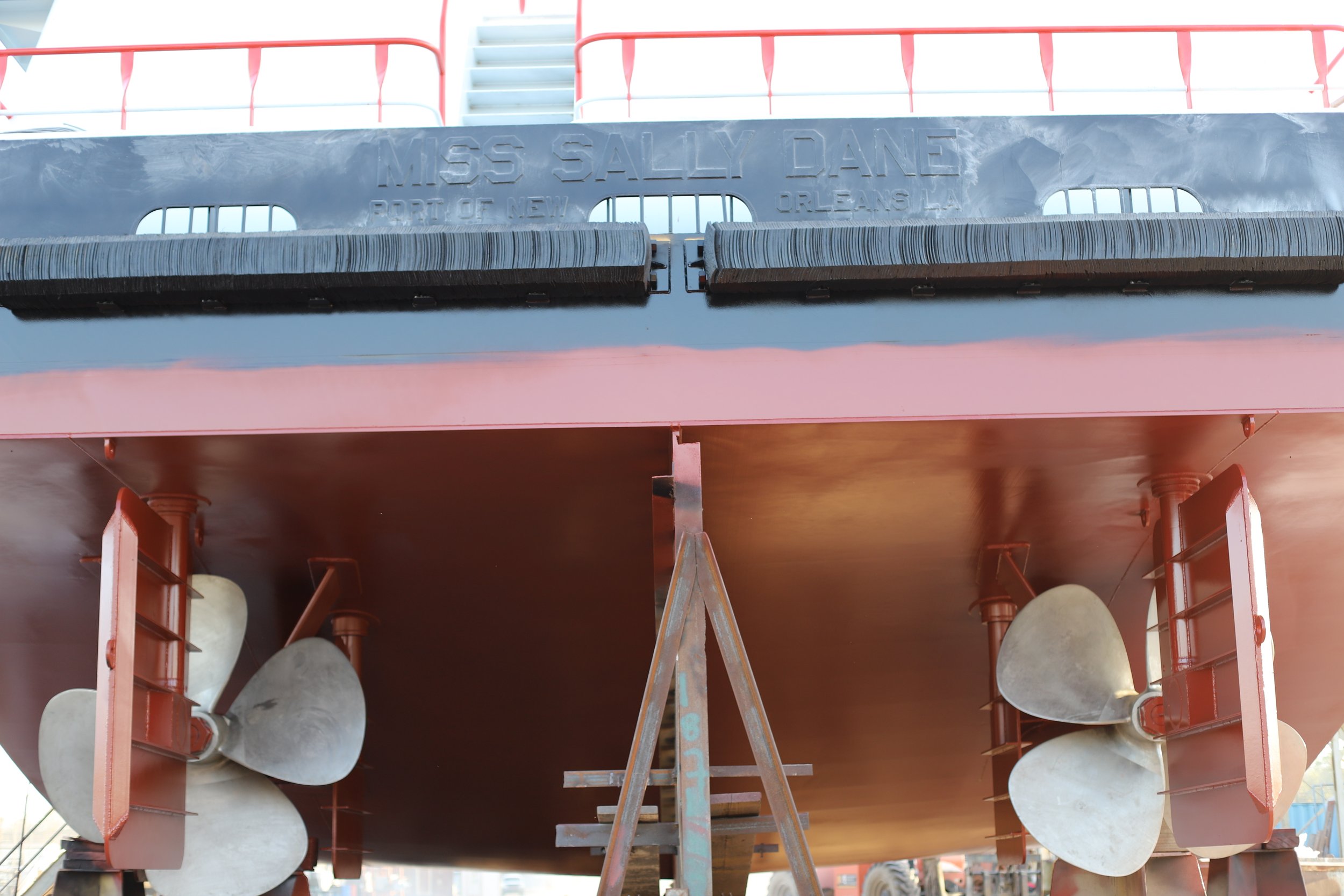The 10% Rule
A 2000HP push boat is equipped with 76” D-Style propellers that have sufficient tip clearance.
In many cases, bigger and slower is the key to efficient thrust generation for slow to medium speed working boats. Tugs, push boats, fleet boats, line haul boats, ferries, trawlers, etc… all rely on large propellers turning relatively slowly.
I’ve recently heard naval architecture referred to as the engineering of compromise. And that’s not untrue. With fixed-pitch propellers, you simply can’t serve 2 masters. If you want to maximize bollard thrust, you can’t expect to gain speed. Conversely, if vessel speed is a priority, developing thrust at slower speeds will suffer.
Adhering to the bigger-is-better mantra with regard to slow-speed thrust, it would make sense to cram as much propeller under the boat as possible. However, one of the many constraints that come into play with regard to propulsion design is tip clearance. The closer the blades are to the hull, the greater the opportunity for vibration.
As each blade passes by the bottom of the boat, a pulse is transmitted to the hull. The closer the blade tip is to the hull, the more the pulse can be felt. In some cases, if the blades are too close, damaging vibration and noise can occur. This can result in damage to the vessel structure itself and the equipment on board. Crew comfort is also at risk with severe vibration and noise.
To avoid these problems, a rule of thumb is generally applied: propeller tip clearance should be around 10% of the diameter of the prop. For example: with an 80” propeller, 8” would be an appropriate tip clearance to reasonably combat the effects of vibration and noise.
Other methods can be employed when adequate tip clearance simply can’t be met while generating the needed thrust. Increasing the number of blades also increases the frequency of the felt vibrations, which reduces the effects of the vibration. Designing fair hull lines and appendages also has a positive effect on the inflow to the props, which can reduce the effects of cavitation and vibration.
Computational Fluid Dynamics or CFD is a tool that can be used to predict the ill effects of insufficient tip clearance and to optimize the design of the propulsion system. Propeller design is another way to lessen the effects of inadequate tip clearance. The Edge propeller has been optimized to work in applications that have less-than-optimal tip clearance.
The blade geometry of the Edge reduces water shed off the tips of the blades, reducing the felt vibrations transmitted into the hull. Additionally, greater loading at the tips of the blades can occur without increasing harmful cavitation. A simple way of thinking of this propeller design is that it behaves like a propeller of a substantially larger diameter. It develops more thrust with less noise and vibration than its traditional counterparts. And it can achieve this with less-than-optimal tip clearance.
The Edge propeller design employs a ‘winglet’ feature at the tips that is part of what allows tip clearances less than 10%.


